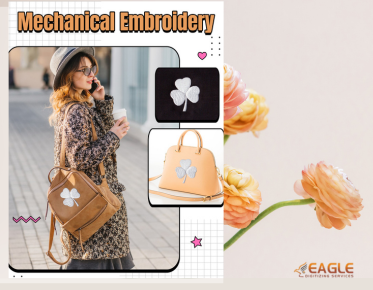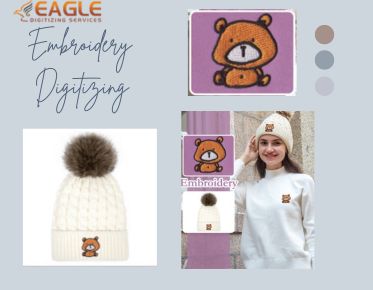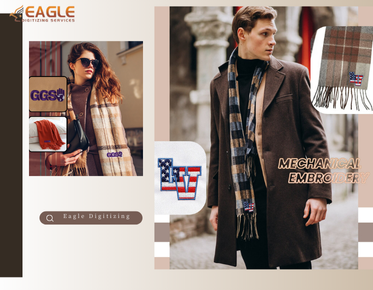Unraveling the Mystery: Screen-Print and Giclée Differences
When it comes to
reproducing artwork, understanding the differences between screen-printing and
giclée is essential for artists and collectors alike. Screen-printing is a
time-honored technique that involves pushing ink through a mesh screen to
create bold, textured images, while giclée employs advanced inkjet technology
for stunning detail and color accuracy. Each method has its own unique
characteristics, benefits, and ideal use cases, making it important to choose
the right one for your project. In this article, we’ll break down the key differences
between screen-prints and giclées, helping you make informed decisions about
your art reproduction needs.
Understanding the Basics of Screen Printing
What
Is Screen Printing? An Overview
Screen printing,
also known as silkscreen printing, is a captivating and versatile printing
technique that has been around for centuries. Originating from ancient China,
this method involves pushing ink through a mesh screen onto a substrate, which
can be fabric, paper, or other materials. Each color in a design requires a
separate screen, allowing for bold and vibrant images. This method is
particularly favored for its ability to produce striking visuals, making it a
staple in fashion, art, and promotional materials.
The
Screen Printing Process: Step-by-Step
The screen
printing process is both an art and a science. It begins with the creation of a
stencil, typically made from a fine mesh fabric stretched over a frame. This
stencil is coated with a light-sensitive emulsion. Once the emulsion dries, the
design is transferred onto the screen by exposing it to light. The areas not
exposed harden, while the rest washes away, leaving a stencil of the design.
Next, the screen
is placed on the substrate, and ink is applied to the top of the screen. Using
a squeegee, the ink is pushed through the open areas of the stencil onto the
substrate below. After printing, the substrate needs to dry, and sometimes a
heat source is used to cure the ink for durability. This meticulous process
allows for rich, textured prints that can be produced in large volumes.
Exploring Giclée Printing
What
Is Giclée? Definition and Origins
Giclée printing
represents a modern marvel in the world of reproduction. "Giclée" is
derived from the French verb "gicler," which means "to
squirt," and it accurately describes the inkjet spraying procedure that is
used. This technique emerged in the early 1990s as a way to produce
high-quality art reproductions using advanced digital printers. It allows
artists to replicate their work with incredible fidelity, maintaining the
essence of the original piece.
The
Giclée Printing Process Explained
A high-resolution
digital scan of the original artwork is the first step in the giclée printing
process. This scan captures intricate details and vibrant colors, preserving
the artist's intent. The digital file is then sent to a specialized inkjetprinter that uses archival-quality inks. Unlike screen printing, giclée
printing allows for an almost unlimited color palette and smooth gradients,
resulting in prints that closely resemble the original art.
The choice of
paper is also critical; giclée prints often utilize acid-free and cotton rag
papers to ensure longevity and quality. After printing, these pieces are
typically treated with a protective coating, further enhancing their durability
and resistance to fading.
Comparing the Two Techniques
Screen
Printing vs. Giclée: An Overview
While both screen
printing and giclée serve the purpose of reproducing images, they cater to
different artistic needs. Screen printing shines in producing bold, graphic
designs that are often used for merchandise and promotional materials. On the
other hand, giclée is the go-to choice for artists and photographers who
require meticulous detail and color accuracy in reproducing their work.
Visual
Differences: How They Look and Feel
Visually, screen
prints often possess a tactile quality, with rich, saturated colors and a
slightly raised texture due to the ink layering. This gives screen prints a
unique character that appeals to many consumers. Giclée prints, in contrast,
deliver a smooth, refined surface that emphasizes fine details and subtle color
transitions. The end result is an image that closely mimics the original
artwork, capturing the essence of the artist’s vision.
Durability
and Longevity: Which Lasts Longer?
When it comes to
durability, giclée prints tend to have the upper hand. Utilizing archival inks
and acid-free papers, giclée prints can last for decades without significant
fading, provided they are displayed correctly. Screen prints, while durable,
may fade over time, especially if subjected to harsh lighting conditions.
Therefore, for collectors and artists aiming for longevity, giclée is often the
preferred method.
Cost Considerations
Cost
Breakdown: Is Screen Printing More Affordable?
Cost is a crucial
consideration when choosing a printing method. Screen printing can be mhttps://www.vecteezy.com/blog/design-tips/what-is-a-vector-fileore
affordable for larger runs due to the setup costs being distributed across
multiple prints. However, for smaller projects, the initial investment in
screens and setup can make it less cost-effective. Giclée printing, while often
more expensive on a per-print basis, becomes economical when producing limited
editions or individual pieces. The overall choice largely depends on the scale
of the project and the desired quality.
Understanding
the Pricing of Giclée Prints
Giclée prints
generally command a higher price due to the quality of materials and the
meticulous nature of the process. Factors influencing pricing include the size
of the print, the reputation of the artist, and the specific materials used.
Collectors may be willing to pay a premium for giclée prints, recognizing their
value and the fidelity they provide in reproducing original artworks.
Quality Factors
Color
Accuracy: How Each Method Stands Up
Color accuracy is
paramount for artists and collectors alike. Screen printing, with its vibrant
inks, offers bold color applications but can struggle with subtle gradations.
Giclée printing, on the other hand, employs a wider color gamut, enabling it to
reproduce colors with exceptional fidelity. This precision is vital for
capturing the essence of original artworks, particularly in fine art
reproductions.
Resolution
and Detail: Which Technique Wins?
When it comes to
resolution, giclée printing is the clear winner. The high-resolution scans used
in giclée allow for intricate details and smooth transitions in color that
screen printing may not achieve. Artists seeking to replicate the nuances of
their work will often prefer giclée for its unparalleled ability to maintain
clarity and detail.
Why
Giclée Prints Are Often Preferred for Fine Art
The meticulous
nature of giclée printing, combined with its focus on detail and color
accuracy, makes it a favored choice in the fine art world. Giclée prints can
effectively capture the subtleties of an artist's work, making them suitable
for galleries and collectors who demand high standards in reproduction. The
longevity of giclée prints further solidifies their status as a preferred
method for art reproduction.
Applications and Uses
When
to Choose Screen Printing: Common Applications
Screen printing
is a powerhouse for projects where bold visuals are essential. Common
applications include clothing, posters, and promotional merchandise. Its
ability to produce vibrant colors makes it a staple for brands seeking
impactful marketing materials. Screen printing is also popular for creating
unique, limited-run items that benefit from its distinct, tactile quality.
When
to Opt for Giclée: Ideal Use Cases
Giclée printing
shines in applications requiring high fidelity and detail, such as fine art
reproductions, photography prints, and limited edition artworks. Artists
looking to sell reproductions of their work often choose giclée for its ability
to maintain the original’s integrity. Additionally, giclée is ideal for
personal projects that aim to showcase art with precision and depth.
Understanding
Market Demand for Each Method
Market demand for
screen printing and giclée printing varies significantly. Screen prints are often
sought after for their affordability and bold designs, making them popular
among consumers looking for unique apparel or merchandise. In contrast, giclée
prints cater to a niche market that values quality and longevity, appealing
primarily to collectors and art enthusiasts. Understanding these trends can
help artists and businesses tailor their offerings to meet consumer preferences
effectively.
Environmental Impact
Sustainability
in Screen Printing vs. Giclée
Both screenprinting and giclée printing have environmental considerations. Screen printing
can be less eco-friendly due to the chemicals and inks used, but advancements
in technology have led to the development of more sustainable practices, such
as using water-based inks. Giclée printing, while generally more eco-conscious
due to its on-demand nature, still requires consideration of materials used in
inks and papers. The environmental impact of each method largely depends on the
choices made by the artist or printer.
How
Eco-Friendly Are These Printing Methods?
Eco-friendliness
in both methods hinges on material selection and production practices.
Utilizing eco-friendly inks, recyclable papers, and sustainable production
methods can significantly reduce the environmental footprint. As consumers
increasingly prioritize sustainability, adopting greener practices in both
screen printing and giclée printing can enhance market appeal and contribute
positively to the environment.
Choosing the Right Technique for Your Project
Factors
to Consider: Purpose, Audience, and Budget
Selecting between
screen printing and giclée printing involves evaluating several factors.
Consider the purpose of the project: Is it for merchandise, fine art, or
personal use? Next, assess the target audience and what they value—bold designs
or intricate details. Lastly, take budget into account; larger runs may benefit
from screen printing’s lower costs, while giclée may be more suitable for
premium pieces. Each of these elements will guide the decision-making process.
How
to Decide Between Screen Print and Giclée
To make the best
choice, weigh the project’s goals against the strengths of each method. For
bold, graphic designs intended for mass production, screen printing is often
ideal. Conversely, for projects requiring high detail, color accuracy, and
longevity, giclée printing stands out. Ultimately, the decision should align
with the project’s intent and the desired outcome.
Understanding the differences between screen printing and giclée printing is essential for artists and consumers alike. Each method has its unique strengths, catering to various artistic needs and preferences. By recognizing the qualities of both techniques, individuals can make informed decisions that enhance their creative endeavors. In an ever-evolving landscape of printing technology, the choice between screen print and giclée ultimately reflects the essence of the art itself and the vision of the creator.



